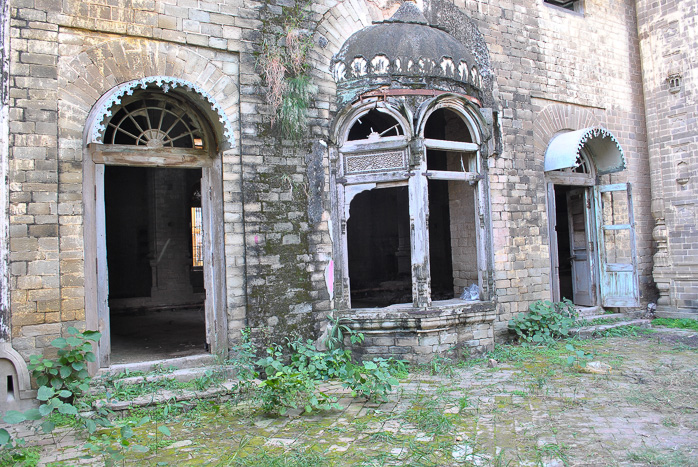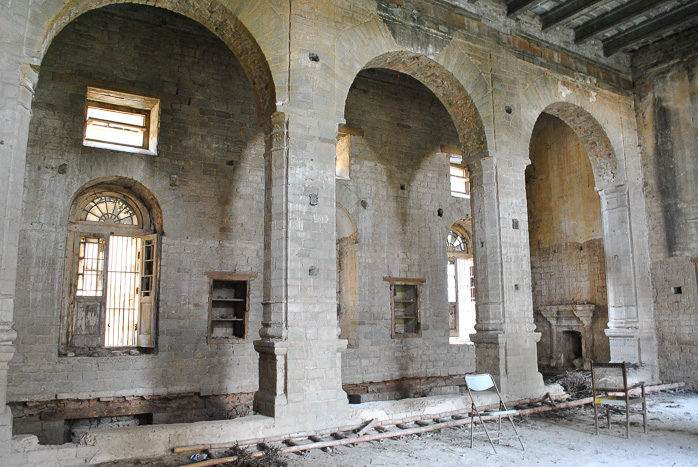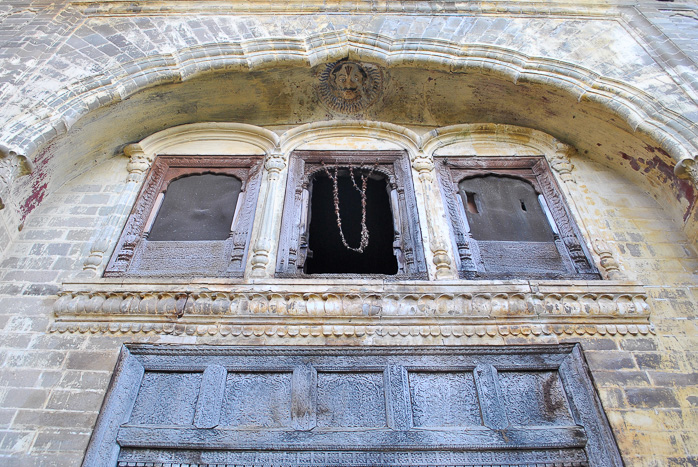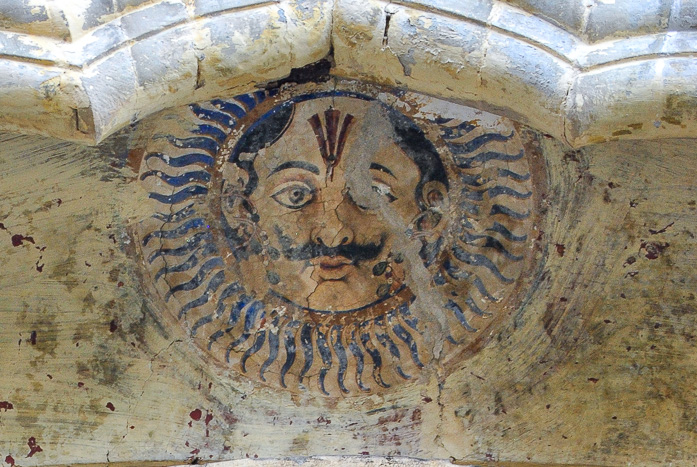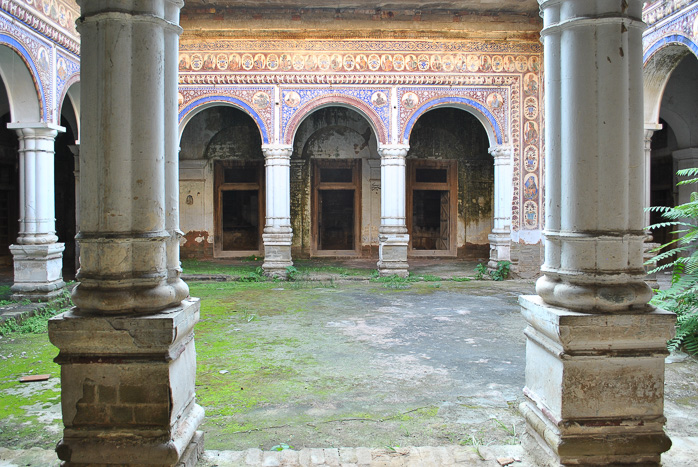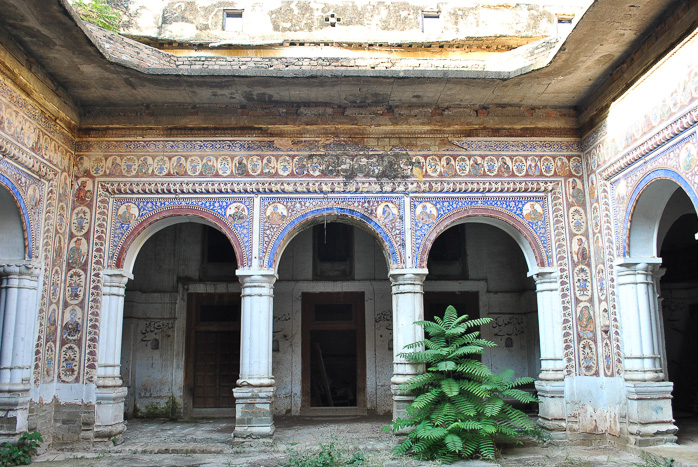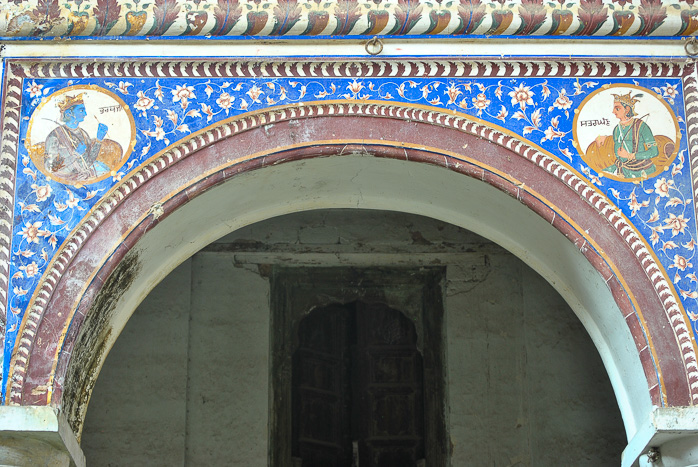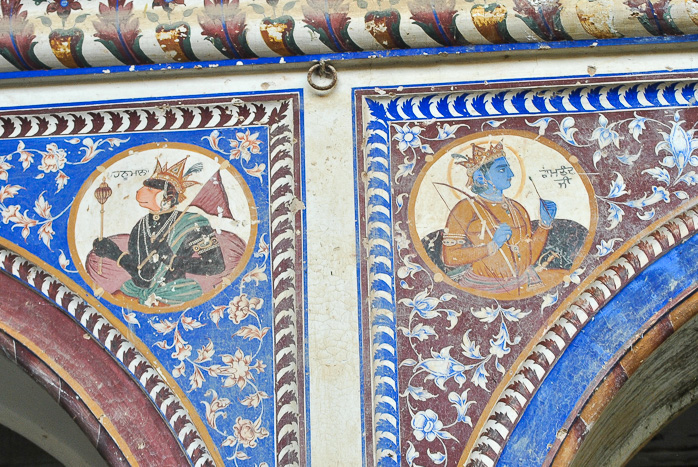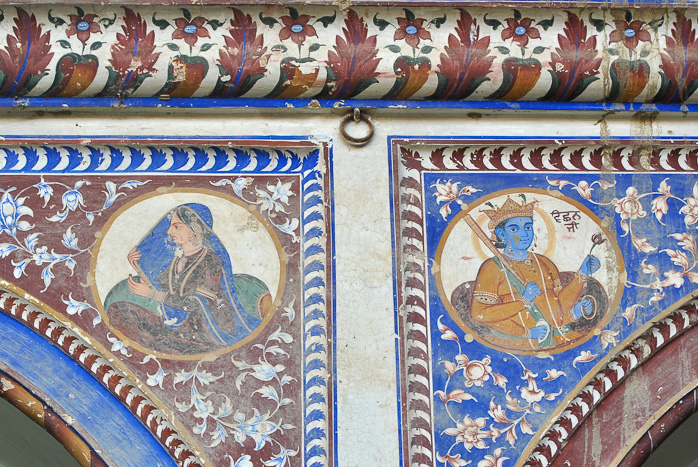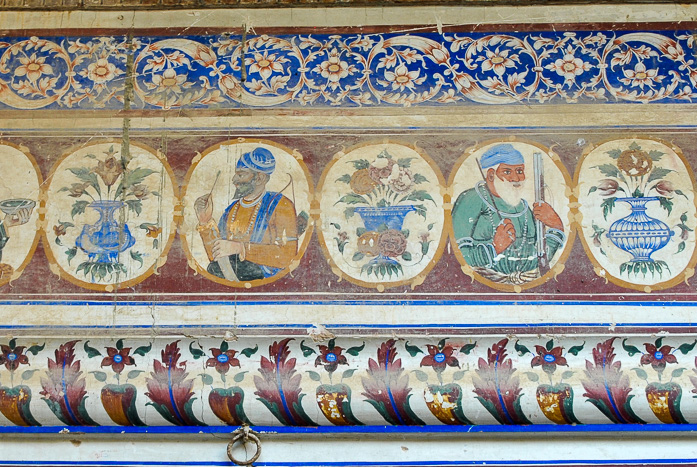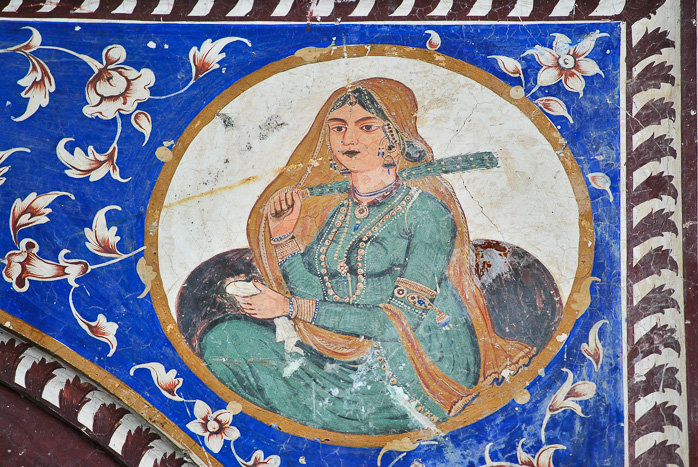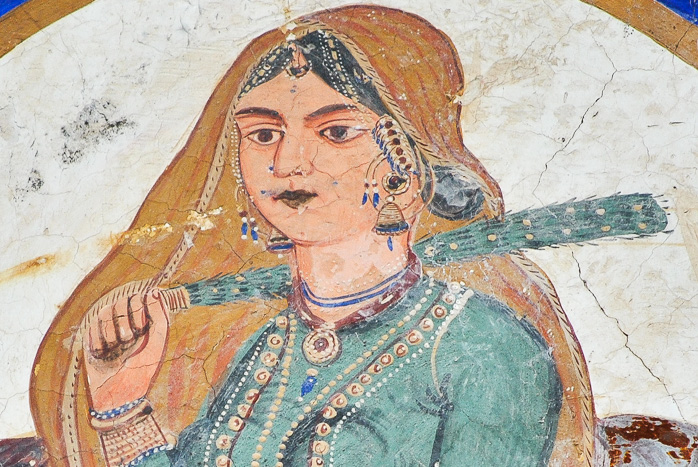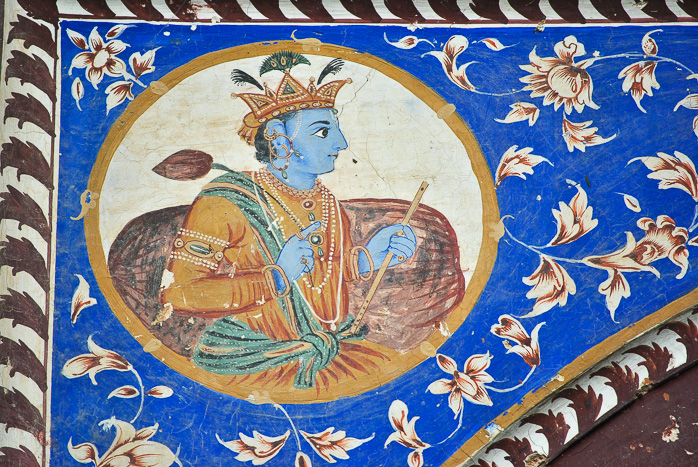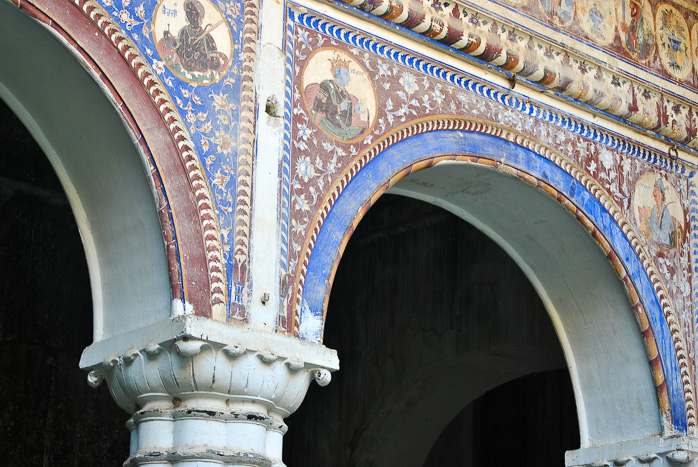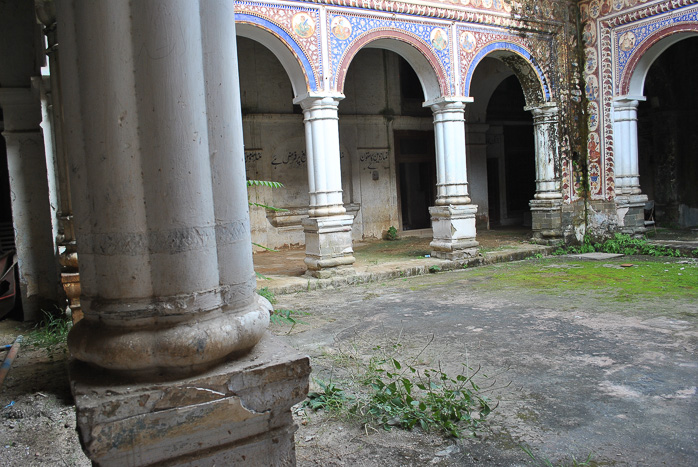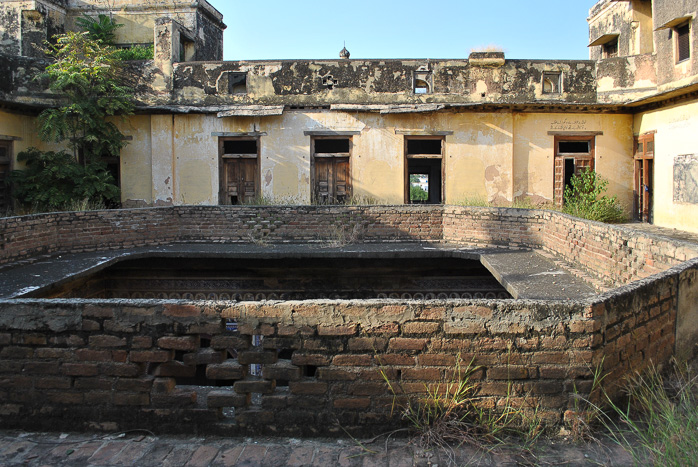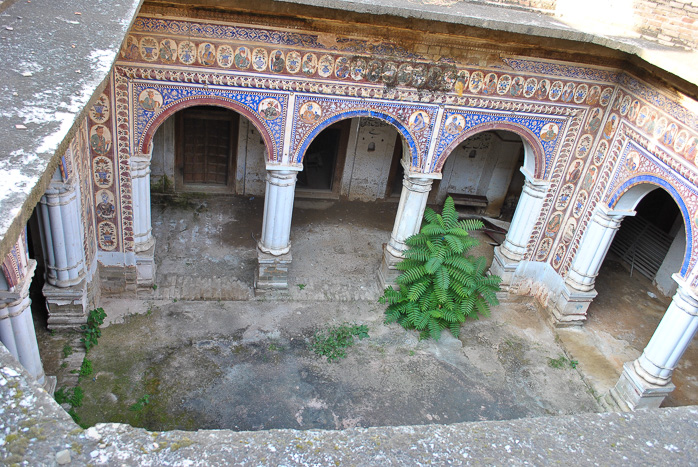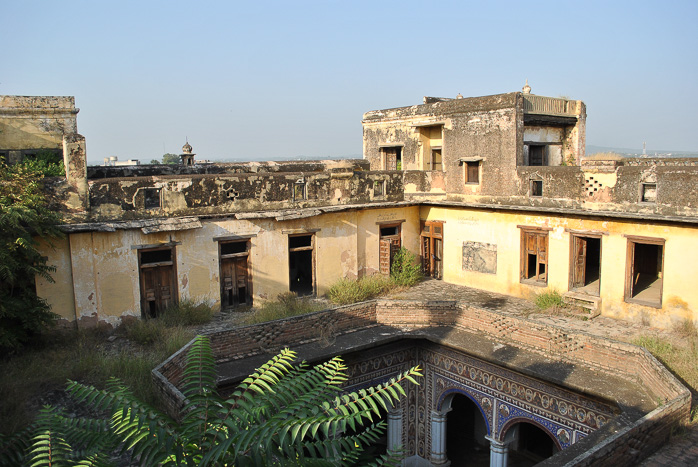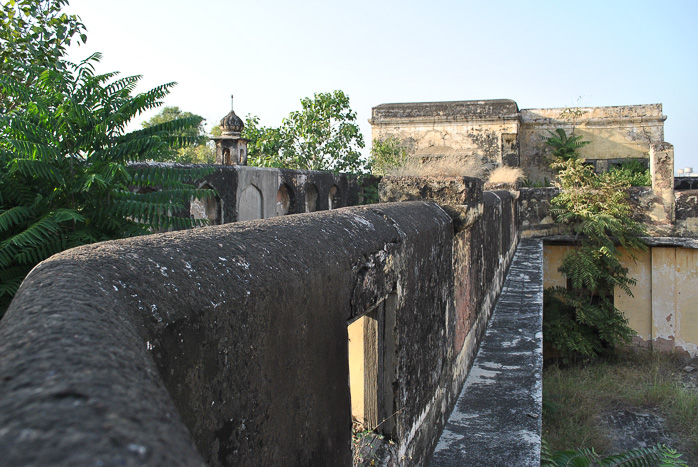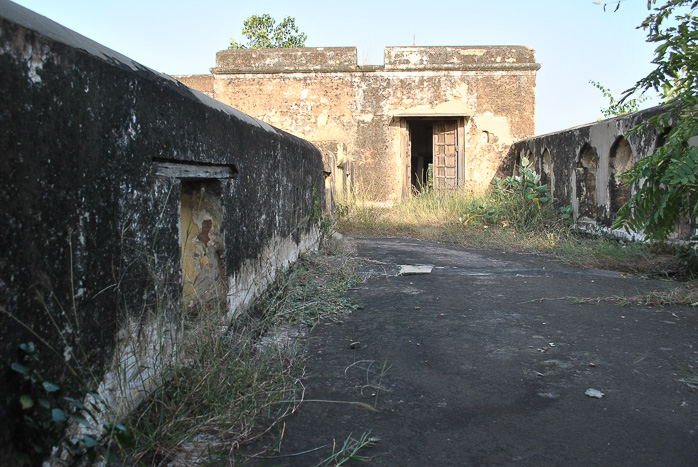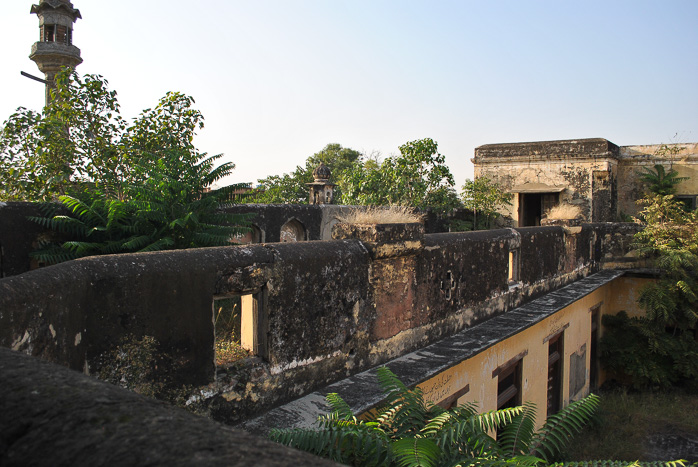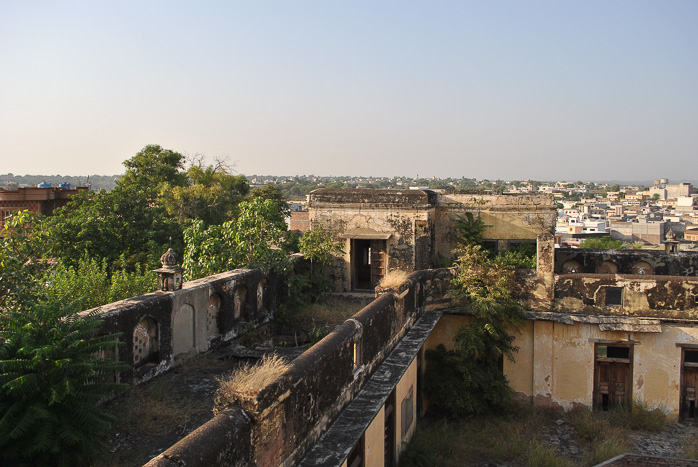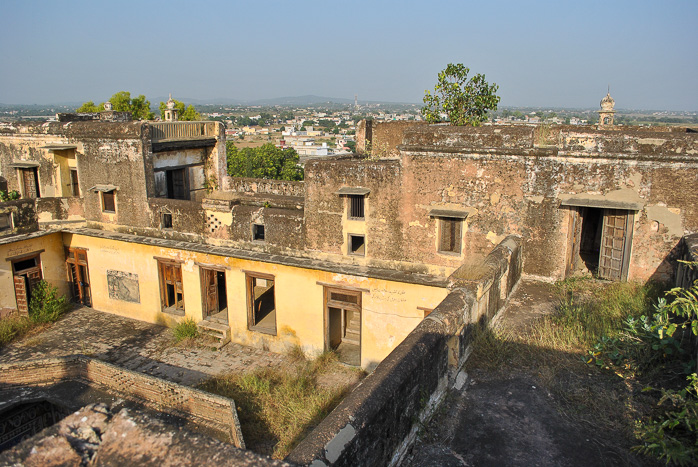Khem Singh Bedis Haveli
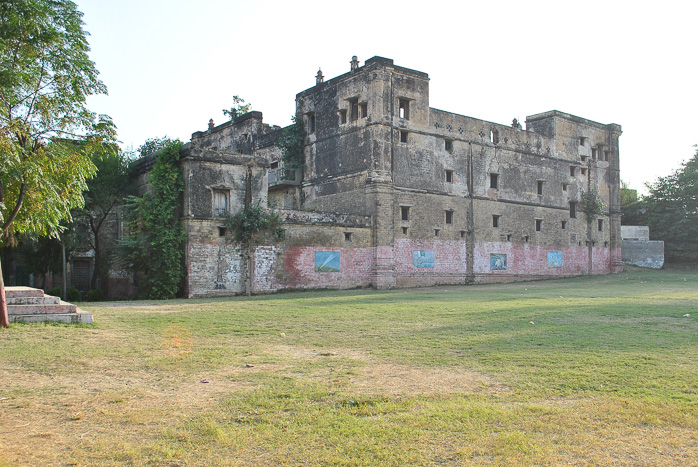
La haveli (mansión) de Khem Bedi Singh, también llamada Bedi Mahal, se encuentra en Kallar Syedan, en el distrito centro-este de Rawalpindi. Fue construido en el siglo 1860 por Khem Singh Bedi (1832-1905), un gran terrateniente, reformador religioso y autoproclamado descendiente directo de Guru Nanak, el fundador del sijismo.
Khem Bedi Singh fue muy influyente en el movimiento reformista Singh Sabha, que buscaba revitalizar la religión sij volviendo a sus raíces y mejorando el prestigio de Gurmukhi, el sistema de escritura punjabi utilizado por las escrituras sij. Su objetivo era evitar movimientos abiertamente políticos que pudieran alterar la delicada realpolitik de la región, en la que el imperio británico dominaba un vasto paisaje multiétnico que alguna vez había sido gobernado (en la memoria viva) por los propios sijs, y antes, por el imperio mogol musulmán. Con estos fines, Khem Bedi Singh patrocinó el establecimiento de más de 50 escuelas y realizó otros esfuerzos filantrópicos. También se congraciaba con las autoridades británicas y recibió una serie de distinciones, incluida la de ser nombrado Caballero Comandante del Imperio Indio. Cerca del final de su vida, tuvo la oportunidad de viajar a Londres. Después de su muerte, su familia continuó en buena relación con las autoridades británicas y mantuvo el control sobre vastas extensiones de tierra en el área de Kallar Syedan.
En 1947, luego de la partición de India y Pakistán, el haveli sirvió como una estación de refugio para sikhs e hindúes abandonados por la partición, y más de 3.000 encontraron seguridad temporal allí antes de encontrar un refugio más permanente en la frontera con India. Más tarde, el haveli se convirtió - irónicamente reflejando la estima de Khem Singh Bedi por las escuelas - en una escuela secundaria pública para niños, en cuyo cargo sirvió durante muchos años. Aunque la conversión a una escuela no resultó en alteraciones significativas en el edificio, y varios artículos señalan que los administradores y estudiantes de la escuela tuvieron cuidado de no desfigurar el edificio de ninguna manera, el inevitable desgaste de numerosos ocupantes a lo largo de los años se ha llevado un peaje. En la actualidad, el edificio está abandonado y deshabitado, con techos podridos, murales descoloridos y mampostería en ruinas.
The haveli (mansion) of Khem Bedi Singh, also called the Bedi Mahal, is located in Kallar Syedan in east-central Rawalpindi district. It was constructed in the 1860s century by Khem Singh Bedi (1832-1905), a large landowner, religious reformer, and self-styled direct descendant of Guru Nanak, the founder of Sikhism.
Khem Bedi Singh was highly influential in the reformist Singh Sabha movement, which sought to revitalize the Sikh religion by returning to its roots and enhancing the prestige of Gurmukhi, the Punjabi writing system used by Sikh scriptures. It aimed to avoid overtly political moves which might upset the delicate realpolitik of the region, in which the British empire held sway over a vast, multi-ethnic landscape that had been once ruled (within living memory) by the Sikhs themselves, and earlier, by the Muslim Mughal empire. To these ends Khem Bedi Singh sponsored the establishment of upwards of 50 schools and made other philanthropic efforts. He also ingratiated himself with the British authorities and was awarded a number of distinctions, including being made a Knight Commander of the Indian Empire. Near the end of his life, he had opportunity to travel to London. Following his death, his family continued to remain in good graces with the British authorities and retained control over vast tracks of land in the Kallar Syedan area.
In 1947, following the partition of India and Pakistan, the haveli served as a refuge station for Sikhs and Hindus marooned by the partition, with upwards of 3,000 finding temporary safety there before finding more permanent shelter over the border in India. Later, the haveli was--ironically mirroring Khem Singh Bedi's esteem for schools--converted into a public high school for boys, in which capacity it served for many years. Although conversion to a school did not result in significant alterations to the building—and several articles note the school's adminstrators and students were careful not to deface the building in any way—the inevitable wear-and-tear of numerous occupants over the years has taken a toll. At present, the building is abandoned and uninhabited, with rotting ceilings, faded murals, and crumbling masonry.
